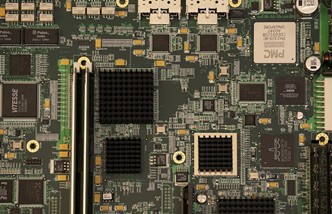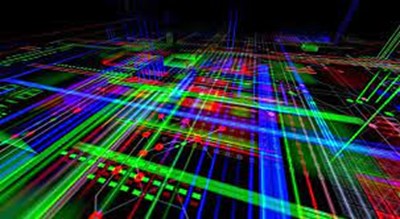Seng Tiong Ho is a research professor who has authored many academic publications. He is responsible for compiling research on lasers, photonic integrated circuits, and photonics technology. In the following article, Seng Tiong Ho explores the problem-solving capabilities of photonic integrated circuits in more detail.
Photonic integrated circuits (PICs) are those that use light instead of electricity to function. When compared to traditional electronic circuits, PICs show better performance in several areas.
Photonic integrated circuits are able to function faster with less heat production. As a result, they solve common problems in technology such as overheating, low data transfer speeds, low transfer capacities, large circuit size, poor integration options, and vulnerability to electromagnetic pulses. There are also a number of manufacturing limitations solved by PICs, including low yields, slow manufacturing times, and high costs.
Technology-Based Problems Solved by Photonic Integrated Circuits
The electronic standard for integrated circuits has been a major step forward in the tech industry in the past, but they are associated with a number of problems and are beginning to reach the end of their potential. As cross-sector industry demands continue to evolve, electronic circuits simply cannot keep up. That is where photonic integrated circuits come in.
Overheating
Seng Tiong Ho explains that the flow of electrons in these circuts is an inherently inefficient process. Energy is lost as heat as the circuit functions, and this creates a problem with overheating in all of the devices that use them. Photons, on the other hand, have an incredibly low thermal output, eliminating the risk of overheating and the need for cooling systems in devices with these integrated circuits.
Low Data Transfer Speeds & Capacity
As the demand for faster networks and precision technology continues to rise on a global scale, the opportunities provided by electronic circuits are beginning to fall short. Luckily, photonic integrated circuits are capable of solving these limitations, too.
Since PICs use light rather than electrons to function, data transfer speeds are dramatically increased—photons literally travel at the speed of light. As a result, networks that function around photonic microchips will experience much faster data transfer speeds and overall efficiency reports Seng Tiong Ho.
The data transfer capacity of PICs is also far superior to that of traditional electronic circuits. Wider bandwidth capabilities allow more data to be transferred at a time, further improving the overall performance of devices that use them.
Large Circuit Size
Seng Tiong Ho says that there is a need and a demand for miniaturization in the tech world, but unfortunately, electronic circuits have reached their limit here. The innovative technology that allows photonic integrated circuits to work can be sized down to create more discrete, compact integrated circuits that will be beneficial for applications in every sector from healthcare to transportation to telecommunications.
Poor Integration
Seng Tiong Ho explains that traditional electronic circuits have just about reached the end of their capacity for integration. This puts limitations on their potential for advancement across all industries. PICs, on the other hand, have tons of potential as standalone products and can also be integrated with existing electronic circuits to enhance both their functionality and capabilities.

Vulnerability to Electromagnetic Pulses
All electronic circuits are vulnerable to the damaging effects of an electromagnetic pulse. Depending on the severity and the type of device in question, electromagnetic pulses can render technology useless for hours, days, months, or even years. PICs are not vulnerable to this phenomenon and are therefore a more reliable source of power for devices in every industry.
Manufacturing-Based Problems Solved by Photonic Integrated Circuits
Photonic integrated circuits are compatible with the current processing systems used to manufacture and test electronic circuits. As a result, these new circuit types can be seamlessly transitioned to mainstream production in these facilities without any difficulties. In fact, this process will actually solve current problems including low yield, slow manufacturing times, and high production costs.
Seng Tiong Ho says that as PICs are integrated into pre-existing manufacturing plants, production yield will improve dramatically, as will manufacturing times. A more efficient production system will also result in lower manufacturing costs and better accessibility across various industries and for consumer products.
Wrapping Up
Seng Tiong Ho reports that photon technology is the way of the future for integrated circuits. With the expansive applications in every sector of industry and the many advantages over traditional electronic circuits, PICs are already an invaluable innovation. As their development continues to progress and we see production and integration begin on a large scale, our technological future will only look brighter.









